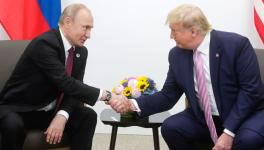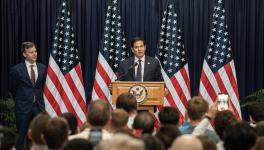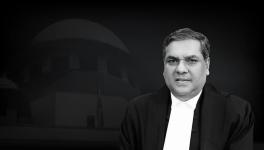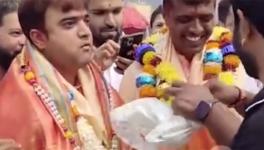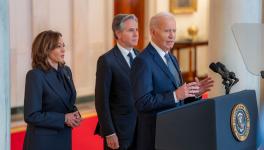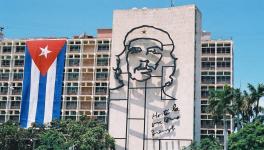China is Subtext as Modi, Biden Talk Mutual Strategic Interests, Trade, Technology
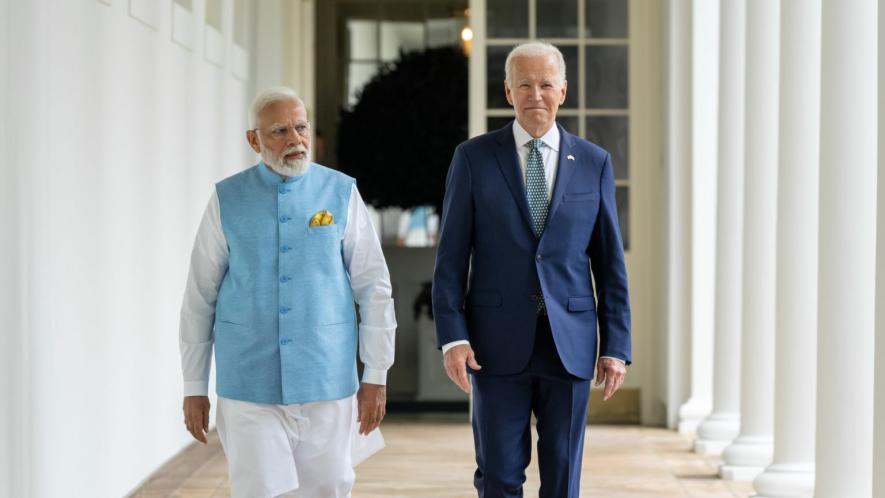
(Photo: President Biden/Twitter)
The three-day state visit of India’s prime minister Narendra Modi to the US was marked by Joe Biden administration’s attempts to pull India closer within its policies focused on the so-called containment of China. A key part of this approach was deals specifically designed for that purpose, as noted by different media reports.
During the visit, apart from the usual rhetoric of their mutual commitments to democracy and human rights, both the countries signed a number of agreements in areas ranging from semiconductors to space cooperation and expressed their mutual “strategic interests” in the Indo-Pacific region.
Modi reached the US on Tuesday and met a number of private investors before starting his official visit on Wednesday. The itinerary of Modi’s visit included him holding an International Yoga Day event at the UN headquarters in New York, his reception at the White House, his address to the joint session of the US Congress and a state dinner.
Modi’s visit also saw protests across the US with some of the lawmakers boycotting his Congress address over his record on religious minorities and human rights violations under his government. Human rights groups and activists also took out protests across the US against Modi’s state visit. Some groups also screened the BBC documentary about Modi’s role during the Gujarat anti-Muslim riots in 2002, which has been banned by the government in India.
Modi has visited the US five times since becoming prime minister in 2014 but this is his first “state visit.” Modi is the third world leader who has been invited for a state visit during Joe Biden’s term in office so far after French President Emmanuel Macron and South Korean President Yoon Suk-Yeol.
Analysts claim that this particular treatment is related to the Biden administration’s increasingly China-centric foreign policy and its attempts to “contain” its rise given outstanding tensions between India and China. The South Korean leader was explicitly asked to undertake anti-China measures during his visit.
Focus on geopolitics
Modi was received by the US president Joe Biden at White House, on Thursday, where both the leaders held a lengthy meeting. In the joint statement, issued on Thursday, both the countries claimed they are “among the closest partners in the world” and they have a “comprehensive global and strategic partnership.”
Both leaders expressed their mutual desire to increase cooperation on various issues including trade, technology, climate change and defense.
The statement talks about both the countries believing in “rule-based international order”, their commitments to reforms in the UN, their commitment to global fight against terrorism, for secure and stable Afghanistan, and for democracy and human rights.
The focus of the joint statement was India and US talking about strengthening their commitments to groups such as Quad, I2U2 and their “enduring commitment to a free, open, inclusive, peaceful and prosperous India-Pacific region.” This was a reaffirmation to the Biden administration’s attempts to build a global alliance against China.
India is part of the Quad group of countries led by the US against alleged Chinese domination in the Indo-Pacific. Other members of the group are Australia and Japan.
The I2U2 alliance between India, Israel, UAE and US was announced, in July last year, as an attempt to counter China’s rising influence in West Asia.
During his address to the US Congress, Modi also seemed to endorse this spirit by referring to “peace and security in the Indo-Pacific region” as being the joint concerns of both the countries.
However, the Biden administration failed to get anything concrete from India on the latter’s position on the war in Ukraine. The joint statement reflects the balancing act that India has been putting up since the beginning of the war in February last year.
Major agreements
Some of the major agreements signed during Modi’s visit to the US include greater cooperation in the areas of semiconductors, critical minerals, technology, space, and defense.
According to reports, US chip maker, Micron, will establish a USD 2.7 billion semiconductor testing and packaging unit in Gujarat. The Indian national government and Gujarat state government will be investing 50% and 20% in the project.
India became a member of the US-led Minerals Security Partnership to increase greater cooperation in critical minerals.
Both the countries agreed to set up a joint Indo-US Quantum Coordination Mechanism for research in the private sector.
In the field of defense cooperation it was agreed that General Electronics will produce jet engines in India in collaboration with Hindustan Aeronautics to be used for Tejas. Another agreement establishes a system according to which US navy ships can use Indian shipyards for repairs. India also agreed to buy MQ-9B SeaGuardian drones.
The issue of MQ-9B drones was one of the critical issues between both the countries. Earlier this month Reuters had claimed in an exclusive report that the US is pushing India ahead of Modi’s visit to expedite the deals related to MQ-9B SeaGuardian armed drones amounting at around USD 2 to 3 billion.
India also became a partner in the US’s Artemis space project and signed deals for greater collaborations with NASA.
In the area of trade India agreed to remove some tariffs imposed on American goods in the last few years and both the countries agreed to resolve outstanding trade disputes at the WTO.
Protests against Modi
After the state dinner Modi participated in a rare but brief joint press conference with Biden. Modi took just two pre-selected questions. Modi has answered questions at a press conference since coming to power in 2014.
Answering a question posed by a reporter of the Wall Street Journal, Modi expressed “surprise” at a question related to India’s treatment of religious minorities calling it an allegation.
At least 75 US legislators from the Democratic Party officially wrote to president Biden to raise the question of human rights and freedom of press with Modi.
Some members of Congress also boycotted Modi’s address to the Congress and urged others to do the same over Modi government’s record on the treatment of religious minorities and other human rights.
Get the latest reports & analysis with people's perspective on Protests, movements & deep analytical videos, discussions of the current affairs in your Telegram app. Subscribe to NewsClick's Telegram channel & get Real-Time updates on stories, as they get published on our website.









